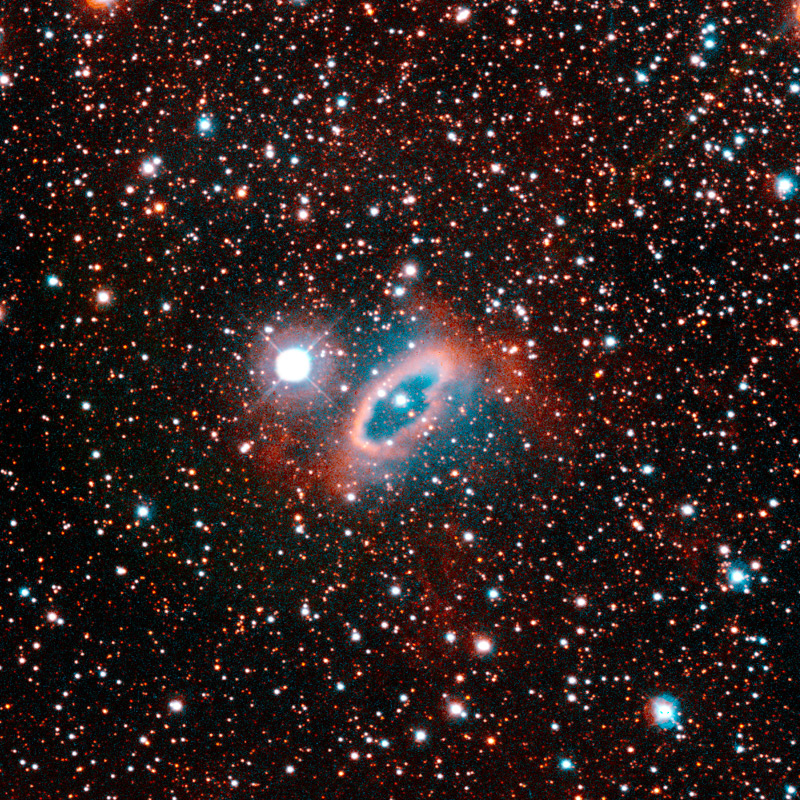Despite their name, planetary nebulae have nothing to do with planets. They’re created when stars like our Sun enter the last stages of life, and puff off their outer layers. Then they shrink down to become a white dwarf star. This must have happened in the case of planetary nebula SuWt 2, located about 6,500 light-years away from Earth. Except there’s a problem: the white dwarf remnant has gone missing. The Hubble Space Telescope has been called in to help in the search, but so far, nothing has turned up.
The case of the missing white dwarf was announced today at the 212th meeting of the American Astronomical Society by astronomers from the Space Telescope Science Institute in Baltimore, and other British and American colleagues.
With most planetary nebulae, there are beautiful and delicate rings; the remnants puffed off by the dying star. There should also be a white dwarf star shining in the middle of the nebula.
At the center of SuWt 2, there two tightly bound stars orbiting one another in just 5 days – neither of these are white dwarfs. Both are hotter than our own Sun, but they’re not hot enough to actually make the nebula glow. To get the nebula as bright as it is, you need a bright source of ultraviolet radiation coming from a white dwarf. Once again… where did it go?
All the evidence points towards that binary pair of stars orbiting within the nebula. The astronomers think that there used to be three stars orbiting one another. The most massive star evolved into a red giant, which temporarily engulfed the other two stars. Trapped inside the red giant’s envelope, they slowed down and spiraled inward.
The spiraling stars caused the red giant’s envelope to spin up so fast that the outer layers were ejected into space, causing the beautiful rings of debris we see today. This might also help explain why the two stars are rotating more slowly than expected.
The exposed core of the red giant might have blasted out ultraviolet radiation that caused the nebula to glow. And then shortly after that, the red giant shrunk down to become a dim white dwarf – one that’s too faint to be detected, even by Hubble.
Original Source: Hubble News Release


.The missing white dwarf is there. If it is never found, it could be behind something larger than it is.
This is a nice article about one of the puzzles modern astronomy meets, and how pieces are put together such that everything fits fine.
By carefully measuring the orbits and the movement of the two stars by means of spectrometry, one might be able to detect the mass and the orbital elements of that hidden white dwarf. The same method is used to detect planets orbiting remote stars.
Regards
Günther
And so the nebulae will soon wink out as there is nothing more bathing it in ultraviolet radiation?